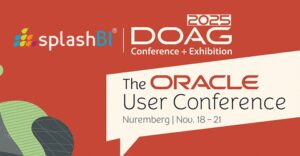In this modern age, moving your application to the Cloud is a no brainer. Benefits vary depending on the type of cloud platform: Infrastructure as a Service (IaaS), Platform as a Service (PaaS), and Software as a Service (SaaS.)
In smaller companies, business users and IT work very closely, so the switch to the Cloud doesn’t cause much friction between the teams. Larger companies, however, have issues when applications are moved to the Cloud because both business users and IT have large teams whose work is disrupted.
Cloud Platform Creates a Wedge
Each of the cloud platform creates some disruption, but this can be positive. When these disruptions come in the form of lost jobs for a certain group or individuals, it creates a division within the organization.
Infrastructure as a Service (IaaS)
In larger companies, there are lots of employees whose responsibilities are to monitor and develop the servers, storage, and network. When you move from on-premise to IaaS providers like Amazon, Google, or Microsoft Cloud, those employees will lose their jobs. This move to IaaS makes sense from the financial stability and guaranteed performance perspective.
Some of these individuals work closely with the application teams and have built a working relationship to be effective and efficient. The move to IaaS puts strain on this relationship and creates a wedge between teams. The best way to avoid this situation is to involve the infrastructure team and identify the gaps between on-premise and the cloud platform. Ask the teams to fill this gap with an understanding that there will be a reduction in headcount, but by the time they are let go, their skill set will be upgraded for the next challenge in a new company.
Platform as a Service (PaaS)
PaaS cloud platform affects both the infrastructure team and application support teams. Most large companies have both groups under the same leadership. Those leaders try to circle the wagon to protect those employees and will start working against the move. In the worst-case scenario, those leaders may try to protect themselves. With PaaS, the application team doesn’t need to worry about the platform; they should focus on solving the business problem using the right tool. Even though the vendor will do most of the work, some tasks are complex, like middleware. This needs special tweaks or OS level configuration that is specific to the application. PaaS platform is configured with common standards which will work for 50% of the application, so the other 50% configurations are best suited for the internal team to handle. Most application developers don’t know the intricacies of the middleware or OS. Again, there will be some reduction in employees, but others can be trained to do other activities for the company.
Also Read – Oracle Cloud Payroll Service to Manage Your Payroll with Optimal Efficiency & Compliance
Software as a Service (SaaS)
SaaS creates the most significant disruption in the working relationship between business and IT. Looking back at the history of business and IT, the roles of those who were in charge of applications have gone back and forth.
Now with the cloud application, the role of leading the business through the digital age has fallen into the business users’ hands. IT departments could have led this effort, but they see it as a threat to their employees in infrastructure, application support, and application development teams. Business users are made to believe that IT is no longer required to run their business because it is taken care of by the SaaS vendor. This may be true if you are a startup or small size company, but a huge mistake for any other size company.
An example of that mistake is integration between applications like HR and Finance, Sales and HR, Finance and Sales, Manufacturing and Sales, etc. Each department thinks it can get the best of the breed cloud solution for their need, and vendors promise integration will be easy, but that is far from the truth. Another fallacy is self-service reporting guaranteed by every vendor falls woefully short of that promise. Features provided with SaaS are standardized for all customers, which may meet 80% of what you need, but the rest of them needs to be built for it to be a differentiator.
Conclusion
In conclusion, moving to the Cloud should be part of every organization’s roadmap. For a successful move to the Cloud, both business and IT users need to work together. Business users know what the customer wants based on their interaction with the customer, but IT knows based on the data collected. Understanding this relationship between interaction and data should be part of working together.
Technology is an enabler, not a leader. Everyone knows that the mobile phone is popular for the ease of use or the apps available in it, not the number of technologies used. If a business needs a new feature function or wants to move quickly, then it needs to work with IT to create a plan. Instead, they find the latest cloud solution and build an ROI/roadmap without understanding the value provided by IT. IT needs to move quickly and adapt to the changing technology landscape; they tend to wait until it is too late.
Business needs IT, and IT needs business to be successful in their industry. IT can provide insights from the data, and businesses can use those insights to change directions. Business needs to know that most of the SaaS providers don’t want IT involved because they don’t want someone to point out the gaps in application. IT needs to know that business is trying to steer the company from financial disaster. IT should know all decisions can’t be based on technology; sometimes, a better solution is worth more than a better technique.
Business shouldn’t believe in every SaaS vendor promise. One of the worst assumptions by business users is that SaaS applications will transform the organization to be more agile and effective. Before looking at a SaaS application, the first action to take is to address the business processes and change them to fit the modern environment, then see which SaaS application will fit 80 to 90 percent of the business process.
It is NOT Business vs. IT; it is Business and IT working together for the company to be a leader in their industry.







